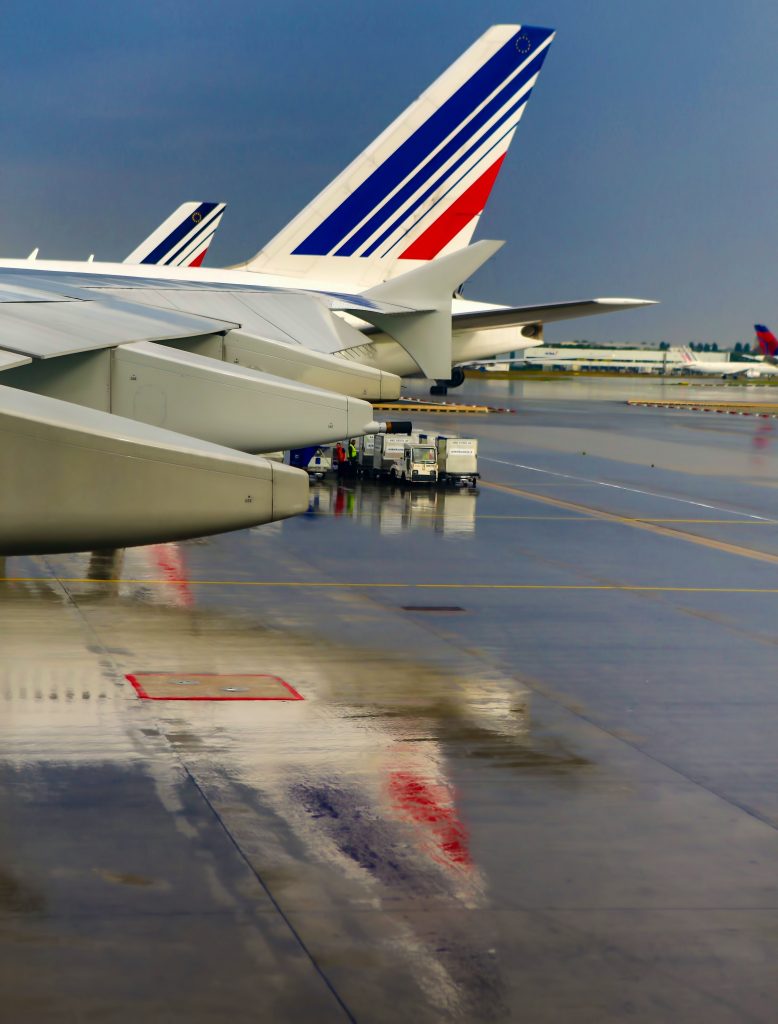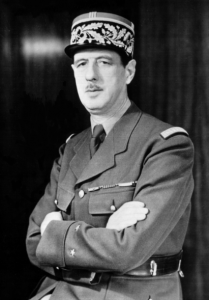Who is Charles de Gaulle? What you didn’t know about the French most famous president.
If you enter Paris by air, the name Charles de Gaulle will be the first one you will hear. And if you know anything about history, you have most heard of Charles de Gaulle or General de Gaulle already. De Gaulle is famous for refusing the armistice when France was invaded by Hitler in 1940. He led the French resistance movement from London throughout the war and for being president of France for 10 years, between 1959 and 1969, serving two successful terms, all things considered. His legacy is still huge in French politics and is remembered for expanding « France’s greatness », forceful style of government. You might have heard the name, but do you know about the man behind it? Keep reading to learn more about Charles de Gaulle.

What was De Gaulle up to durning WWI?
De Gaulle is remembered as a WWII hero and president of France, but most people tend to forget about his early career as a military officer. De Gaulle enlisted as a French army cadet at Saint Cyr military academy in 1909, French equivalent to West Point, and joined a prestigious Infantry Regiment. Towering at over six feet tall, De Gaulle was a model soldier and graduated with distinction. His superior officer was colonel Philippe Pétain, later to become the infamous leader of the Vichy government.
When the First World War broke out in 1914, De Gaulle’s unit was deployed against the German fast advancing units in Belgium. On August 15, just two weeks after the hostilities had began, lieutenant De Gaulle was wounded. After a quick recovery returned to the front line. 6 months later, in march 1915, De Gaulle was wounded second time, and third time in 1916, at the Battle of Verdun, this time quite badly. He got knifed in the thigh by a German baillonette and fainted. When he woke up, he found himself to be a prisoner of war in Germany. De Gaulle attempted to escape 5 times in total but failed every time. He was then transferred to a maximumsecurity prison camp and remained in captivity for 36 months until the war was over in 1918.

How did De Gaulle become a general ?
De Gaulle’s managed to climb up the ranks of the French military, thanks to his great skills as a thinker military strategist and WWII war hero. While he was in captivity in Germany, de Gaulle began writing. Throughout the 1920s and 1930s, he published many books where he advocated for innovative tactics such as the massive use of tanks backed by aircrafts. At the outbreak of World War II, De Gaulle was 49 years old and had not reached the rank of general yet.
De Gaulle remained a colonel and as such was given command over a 140 strong tank unit in Alsace. While in Alsace on the front line, De Gaulle managed to block the German advance and even led a successful counter offensive. He demonstrated his skills so well that day that he was promoted 4 days later, June 1st 1940, to the rank of temporary brigadier-general. A few days later, De Gaulle was offered a job within the French government as Under-Secretary of State for War.
Why did De Gaulle become the leader of the Resistance ?
In June 1940, France is on the verge of losing the war despite the fierce resistance of the French Army. On June 16, the French government resigned. Vice-Primer Minister Marshall Pétain took over and immediately committed the country to renunciation. Pétain called for the fighting to ceased and asked for an armistice the day he took office on June 17. De Gaulle immediately defied his hierarchy, denounced this decision, and fled to London to continue fighting.
The next day, June 18th, De Gaulle delivers a speech broadcasted on the BBC in which he declared: “France has lost a battle, but France has not lost the war”. Nothing has been lost because this war is a world war (…)”. Two weeks later the British government run by Winster Churchill recognized General de Gaulle as leader of the Free French Movement. This was the opening chapter of the saga of Free France and its leader. The Pétain government reacted by sentencing De Gaulle to death in absentia and deprivation of military rank. From London, De Gaulle continued to bolster the French resistance movements through Radio broadcasts. Helping to rally fighters to carry on with the fight against Nazi German occupation. Although in exile, De Gaulle became the voice and the head of the French movements. He earned immense respect and admiration throughout the world.
What were De Gaulle main achievements when he served as President?
At the very end of the war, De Gaulle was appointed president of the French government but temporarily until proper elections would take place. He held that position for about two years before resigning in 1946. He became president once again, 13 years later, in 1959, at 69 years old ! In the 1950s French politics were wracked by political instability in the ongoing colonial wars in Indochina and Algeria.
Situation was so tensed that De Gaulle who had retired from public life and who was writing his war memoirs had to walk back into politics to prevent a civil war. In 1959, de Gaulle was sworn into office. De Gaulle’s main goal was chiefly to maintain France’s independence, while overseeing tough measures to revitalize the country economy. In 1962, De Gaulle took the decision to end the war in Algeria and helped the country to recover its freedom after 130 years of French colonisation.
International Role
During his second term, he fought hard to ensure that France and Europe would remain free, in the context of Cold War politics, the Soviet Union and the United States. He pulled France out of the North Atlantic Treaty Organization (NATO) and developed a bold diplomacy towards the communist bloc, fostering trade and cultural relations with the Soviet Union and the countries of Eastern Europe. De Gaulle’s France was the first western country to officially acknowledge the existence the People’s Republic of China (1964).
Forever a military man at heart, de Gaulle urged France to move forward with a nuclear weapons program. De Gaulle resigned from the presidency in 1969 and retired to his nine-acre country estate in Colombey-les-Deux-Églises, 120 miles southeast of Paris. Unfortunately he was not able to enjoy his retirement for long, as he died on a heart attack in 1970. His stressful life had finally caught up to him. French President at the time, Georges Pompidou, said after his death, “General de Gaulle is dead. France is a widow.” This speaks to the love and support de Gaulle garnered throughout his remarkable life.
If you want to book a tour with My Private Paris: click here.
Article written by Jean




